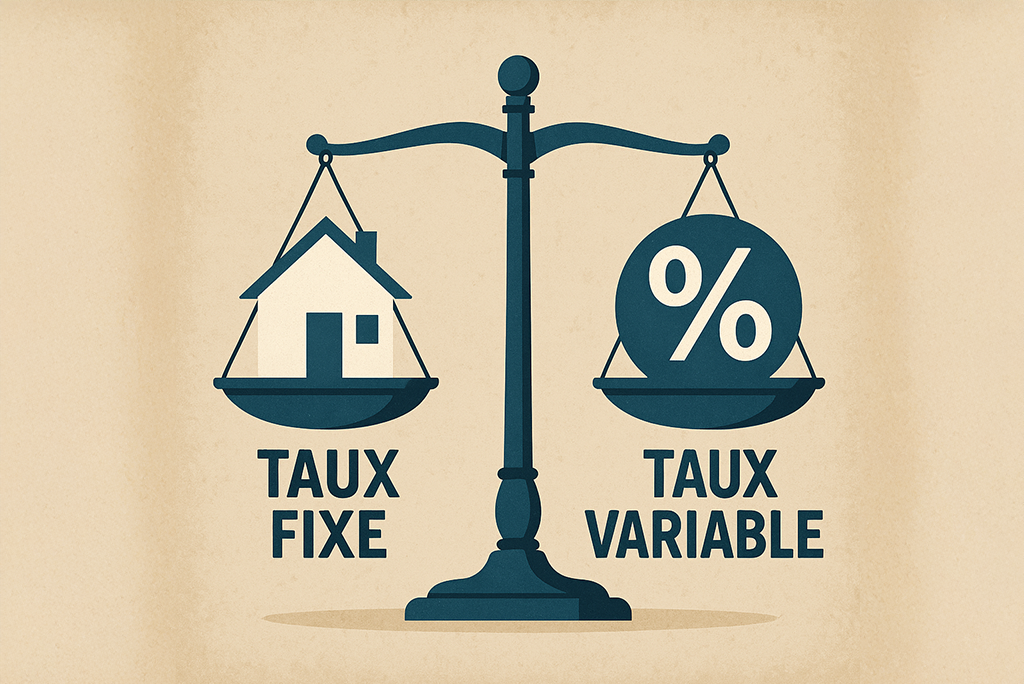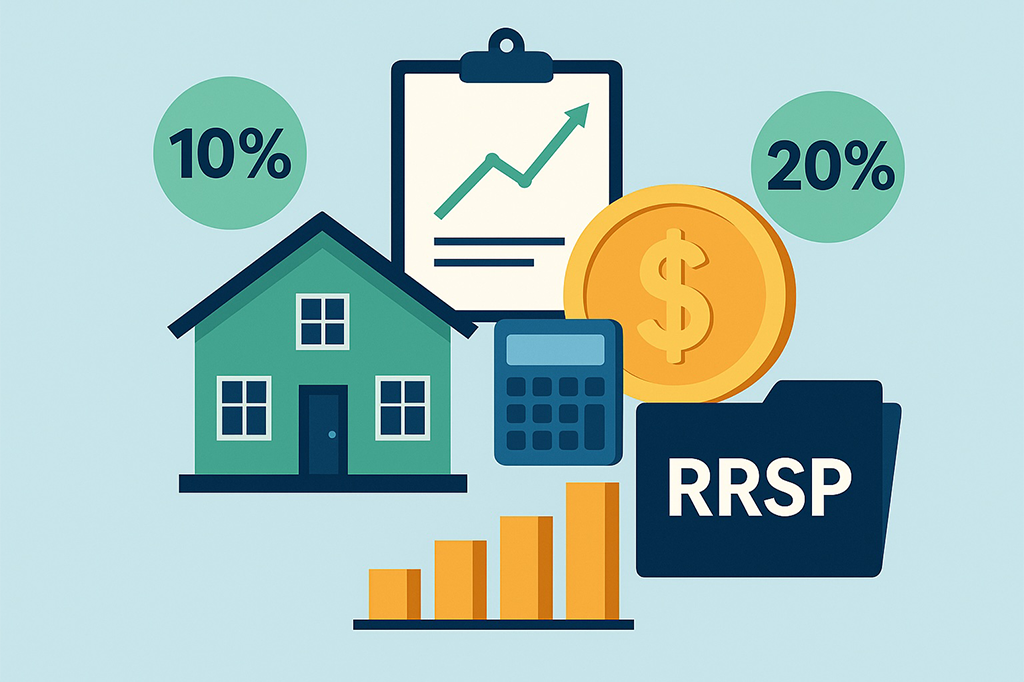Many Canadians and permanent residents (as defined by the Immigration and Refugee Protection Act) live and work outside Canada. They become non-residents for Canadian tax purposes when their residential ties and primary sources of income are located abroad. Many banks decline these profiles, which makes it harder to purchase property in Canada and plan a future return.
Hypotheques.ca offers mortgage solutions for tax non-residents (Canadian citizens or permanent residents), with a robust compliance framework and end-to-end support.
1) Immigration ≠ Tax Residency: Two Separate Statuses
Immigration status: Determines your right to live/work in Canada (citizen, permanent resident, permit holder). It does not determine where you are taxed.
Tax residency: Your primary place of taxation. It depends on residential ties (home, spouse, dependents), presence in the country, intent, and sometimes tax treaties.
Typical case: A Canadian citizen or permanent resident who lives and works abroad for several years, files taxes in the foreign country, and no longer has significant residential ties to Canada → is a Canadian tax non-resident, even if their immigration status remains citizen or PR.
Practical implications
-
Foreign-source income is taxed in the country of tax residence, not in Canada (subject to exceptions).
-
Canadian-source income (e.g., rent, interest): withholding and filing rules may apply.
-
Credit/financing: Many Canadian lenders prioritize Canadian income and Canadian credit history. Files that are 100% “outside Canada” are frequently declined at first pass, which is why a specialized broker matters.
2) Why Most Banks Decline These Files
-
Foreign income and documents that don’t match Canadian formats.
-
Heavier KYC/AML checks (source of funds, country compliance).
-
Limited or stale Canadian credit history.
-
Operational complexity (employment contracts, multilingual documentation).
Result: longer timelines, extra requirements, and automatic declines under standard scorecards—even for highly solvent clients.
3) Our “Tax Non-Resident” Solution (Citizens & PRs Abroad)
Key eligibility conditions
-
Down payment: 20% to 35% (exceptional cases below 20% may be possible based on profile and circumstances).
-
No property owned in Canada at the time of application (borrowers are not current Canadian homeowners).
-
Occupancy: Intent to occupy the property as a principal residence. For a duplex/triplex, a tenant is allowed as long as the buyer resides in the property.
-
Renewal / transfer: Possible. Especially helpful for former HSBC clients now at RBC facing renewal issues.
-
Refinancing: Generally not available. However, keeping the loan via a subrogation-type transfer can be possible, subject to conditions.
Eligible countries & compliance
-
Clients residing in a country on the FATF “black” or “grey” list are not eligible (AML/KYC requirements).
-
Documents must be in French or English; otherwise a certified translation is required by an accredited translator (see OTTIAQ: ottiaq.org).
Commonly requested documents (indicative)
-
Identity and status (passport, proof of citizenship, PR card).
-
Foreign employment contract and recent pay stubs.
-
Financial statements (foreign tax assessment, bank statements).
-
Proof and traceability of down payment (lawful sources).
-
Credit reports (Canada and/or country of residence, if available).
-
Offer to purchase, appraisal (if required), home insurance.
Note: The list is tailored to the country of residence, currency, and profile (employee/self-employed).
4) Products & Financing Parameters (General Framework)
-
Type: Conventional residential mortgage (principal residence; 2–3-unit plex eligible with owner occupancy).
-
Rate & term: Fixed/variable per lender’s offering at submission; stress test applies.
-
Amortization: Typically 25–30 years, depending on profile and product.
-
Currency: Converted to CAD for affordability analysis.
-
Fees: Appraisal, Quebec notary, title insurance if required, transfer costs where applicable.
-
Timelines: Depend on document readiness and time zones; expect additional compliance time.
5) Approval Path — The Hypotheques.ca Method
-
Free diagnostic: tax status, country of residence, goals (purchase now / plan for return).
-
Structured pre-approval: analyze foreign-
currency income, conversion, ratios, and down payment. -
Compliance: country filter (FATF), KYC/AML, source-of-
funds traceability. -
Packaging & submission: to lenders who accept tax non-residents (citizens/PRs).
-
Negotiation: rate, terms, occupancy clauses, possession timeline.
-
Closing: notarial coordination (in person or by proxy as applicable), insurance, disbursement.
-
Aftercare: prepare for renewal/transfer and advise for a potential return to Canada.
6) Use Cases
A. Planned return in 12–24 months
Goal: buy now (schools, neighborhood, transit), rent part of a plex if applicable, then move in at the planned date.
Key: intent to occupy and honoring the occupancy clause.
B. Renewal / transfer challenges
Especially relevant for HSBC → RBC legacy portfolios. We structure the transfer and handle subrogation where refinancing isn’t feasible.
C. Early-career PRs/citizens on foreign assignment
Strong income, limited recent Canadian credit. We build a credible file (contract, payslips, statements, local bank references) and target compatible lenders.
7) Frequently Asked Questions (FAQ)
Q: I’m a Canadian citizen and a tax non-resident. Am I restricted by the “foreign buyer” rules?
A: No. Restrictions aimed at “foreigners” do not apply to citizens or permanent residents.
Q: Can I buy a duplex/triplex and rent the other unit(s)?
A: Yes, provided you occupy one unit (intent to live there). Residual rental income is considered per lender policy.
Q: Can I refinance at purchase?
A: Generally no under this program. However, transfer/renewal or k
Q: Are documents in other languages accepted?
A: Yes, if translated by an accredited translator (e.g., OTTIAQ).
Q: What if I live in a FATF “black/grey list” country?
A: The file is ineligible for AML compliance reasons.
8) Best Practices to Maximize Approval
-
Prepare documents early (3–6 months of bank history, payslips, contract, tax assessments).
-
Stabilize the down payment (own funds, clear provenance, seasoning).
-
Keep a Canadian bank account active if possible (smoother fund flows).
-
Set realistic timelines: international compliance adds time.
-
Work with a mortgage broker to avoid “automatic declines.”
Are you a Canadian citizen or permanent resident working and living abroad, and considered a non-resident for tax purposes?
Contact Hypotheques.ca: we structure your application, identify suitable lenders, and secure a mortgage in Canada for your project or your return.
Useful links
- Certified translations : ottiaq.org
- FATF black/grey lists : fatf-gafi.org
- This article is for informational purposes only and does not constitute tax or legal advice. For tax matters, please consult a professional.








